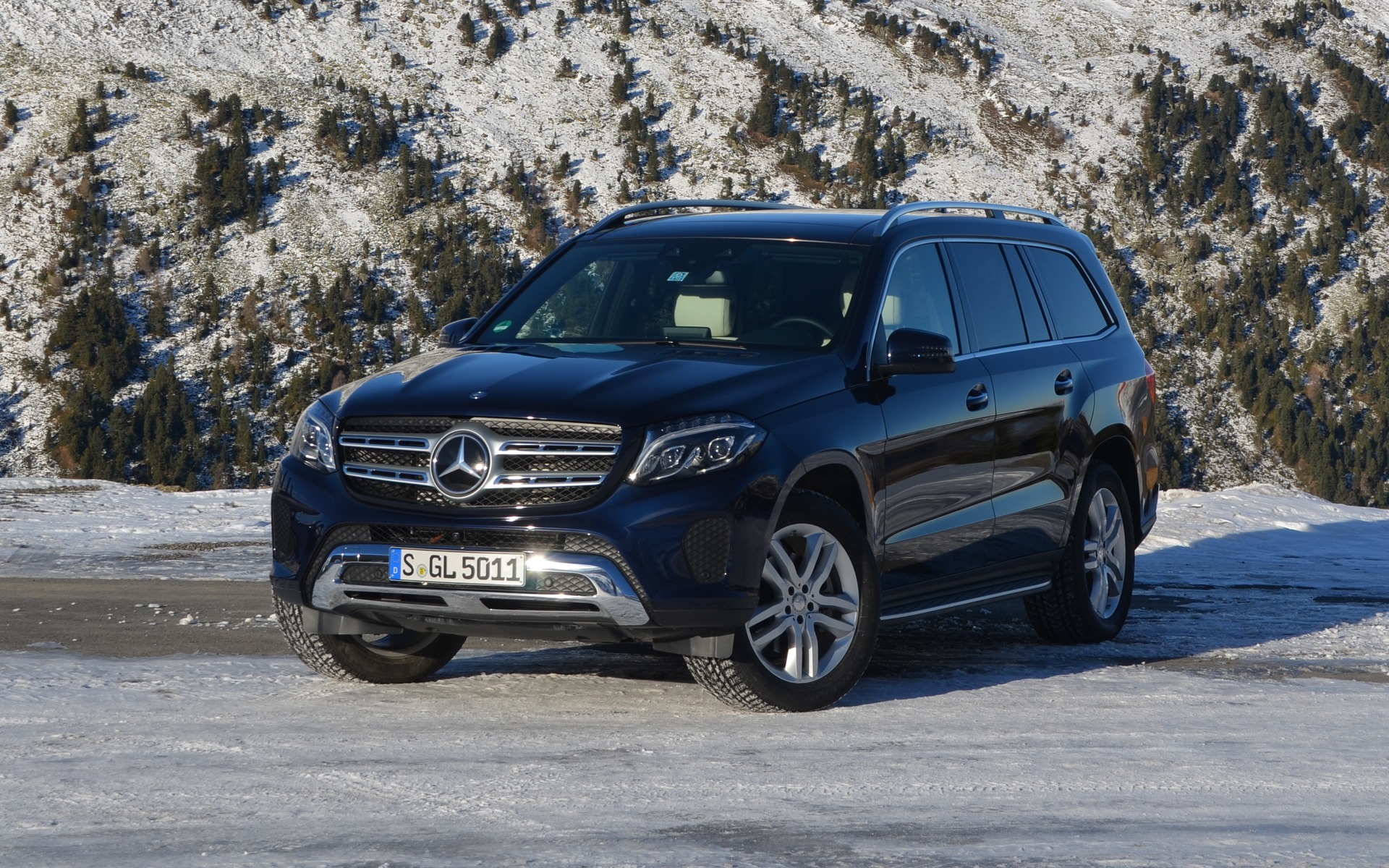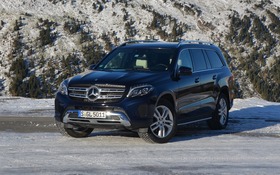2017 Mercedes-Benz GLS: The S-Class Of SUVs

| Strong points |
|
|---|---|
| Weak points |
|
For the 2013 model year, Mercedes-Benz unveiled the second generation of its most imposing SUV, the GL. Three years later, it’s time to refresh it again.
First of all, it got a name change, and we must now call it the GLS. Since the GL is based on the S-Class luxury sedan’s platform, the letter “S” was added. By doing so, Mercedes is respecting the naming strategy it’s now applying to its creations; for example, the GLC is built on the C-Class’s platform.
- Also: Here Is The 2016 Mercedes-Benz GLS
- Also: In a few hours, we’ll be driving the 2017 Mercedes-Benz GLS
This semantics question answered, it’s now time to talk about the vehicle itself. Let’s point out that it will be offered in four variants, the 350d 4MATIC, the 450 4MATIC, the 550 4MATIC and the Mercedes-AMG GLS 63 4MATIC. While Mercedes keeps things simple with the diesel – the “BlueTEC” tag is replaced by the letter “d” – it joyfully compensates with the AMG version.
Mercedes still believes in diesel
the GLS 350d is equipped with a 3.0-litre V6; while they were changing the vehicle’s name, it obviously would’ve been too easy for Mercedes to change their trims to represent engine displacement. Anyway, the diesel produces 249 horsepower and 455 lb-ft of torque. This engine will undoubtedly be a popular choice in Canada. The GLS 450 benefits from 362 hp and 369 lb-ft, thanks to its gasoline 3.0-litre V6. A 4.7-litre V8 with 449 hp and 516 lb-ft is on duty in the GLS 550. As for the AMG version, it unleashes no less than 577 hp and 560 lb-ft with its 5.5-litre V8. These numbers are slightly higher than those of the BMW X5 M – which boasts with 567 hp and 553 lb-ft. What a coincidence…
All these engines boast twin turbochargers, except the diesel engine that has only one. They’re connected to a nine-speed automatic transmission, except the AMG variant that gets only seven gears.
It’s… new
Even if Mercedes-Benz profusely uses the term “new” in its press releases, that’s not exactly true. Some important changes were made under the hood, but the rest, we’re talking details here. The front end sports a more dynamic appearance and blends in better with the rest of the company’s product lineup. The rear portion has barely been revised, and same thing goes inside the vehicle, as the two most significant changes are a new steering wheel and a tablet-like seven-inch screen that isn’t touch-sensitive.
Among the other things that didn’t change is the GLS’ size. It’s long, wide and tail. And it’s even more noticeable on the narrow roads surrounding Innsbruck, Austria, where we drove it. Admittedly, the experience would’ve been worse behind the wheel of a Cadillac Escalade or an Infiniti GX80, which are even bigger. In addition, the GLS’ cargo area is one of the smallest in its segment, which offers a scant 295 litres with all the rear seats in place and 2,300 litres when they’re all folded down.
It’s… new (X2)
The cockpit is obviously trimmed to usual Mercedes-Benz standards. This year, there’s a new Dynamic Select feature, a knob that allows choosing between five drivetrain modes: Comfort, Sport, Slippery, Individual and Offroad. A big addition, for sure, but we all know Mercedes isn’t the first automaker to come up with such a system…
The seats, faithful to German tradition, are firm and yet very comfortable. That goes for the ones in the first two rows. The third-row bench, which isn’t easily accessible, isn’t the most spacious of its kind, but it can be useful for short trips.
We got to drive the 350d. A good portion of the GLS’ heft comes from the astounding quantity of sound-proofing material engineers poured into the vehicle. The cabin is as quiet as the moon’s atmosphere, even at wide-open throttle. I’m slightly exaggerating.
Acceleration isn’t breathtaking, but once under way, the diesel-powered GLS flexes its muscles. The steering isn’t very communicative or direct, although I imagine it’s exactly what typical customers look for. In tight curves, there is a fair amount of body roll, even in Sport mode, but nothing dramatic. The fuel economy figures for the North American market have yet to be published, all versions included.
We also had the opportunity to try out the GLS 550, which is named 500 in Europe even though it gets the same engine. Amazingly fast, this variant could benefit from livelier steering, even with the Sport mode activated. The latter modifies steering input, suspension firmness and throttle response.
Winter traction
We also had a little fun on some sinuous stretches of roads covered in packed snow and ice. The Slippery mode worked wonders and the driver’s lack of braveness (or survival instinct) makes him lift the throttle well before reaching the limits of the 4MATIC all-wheel drive and various stability control systems.
The GLS isn’t the most exciting to drive – it even ranks in the low end of fun-to-drive vehicles – but the update it received makes it an interesting choice for whoever has $100,000 to dump on an SUV that’s hard to park on city streets. Production of the GLS 350d will start in January 2016, while the other versions will start being built in April. Canadian pricing will be announced at a later date.











